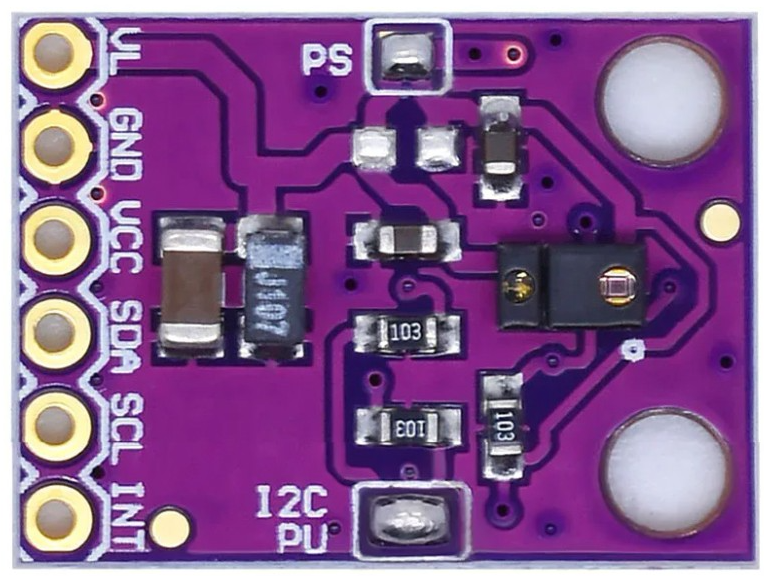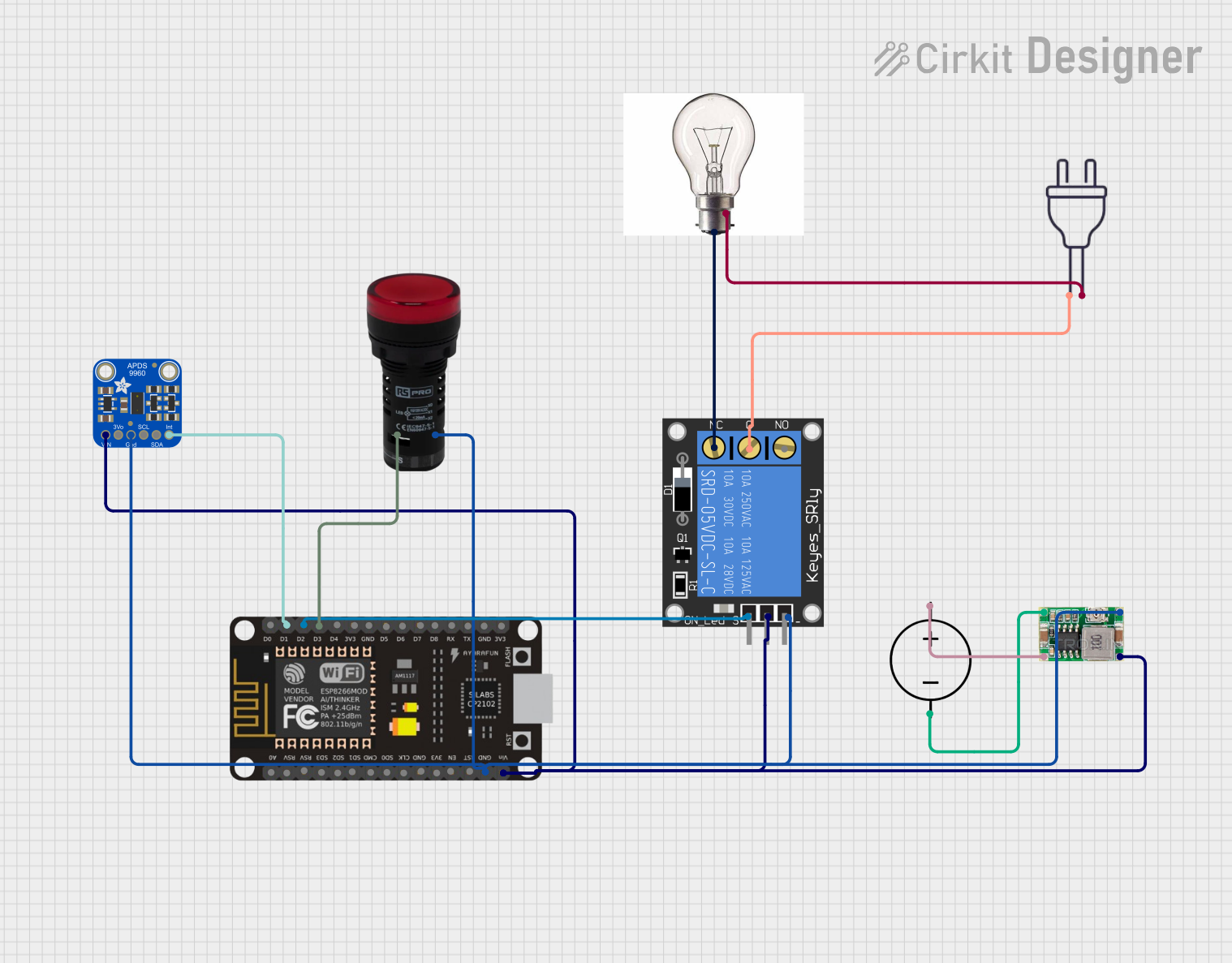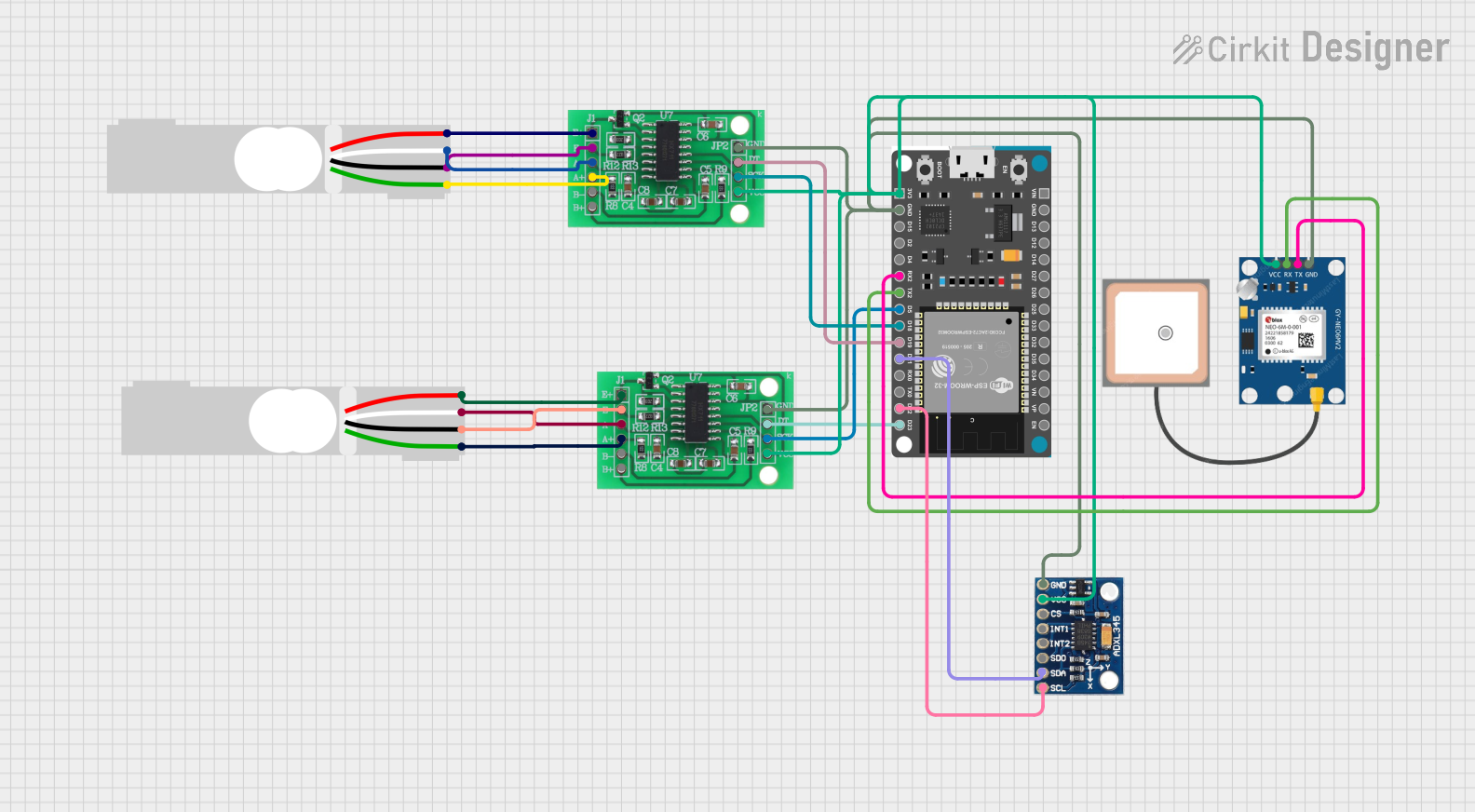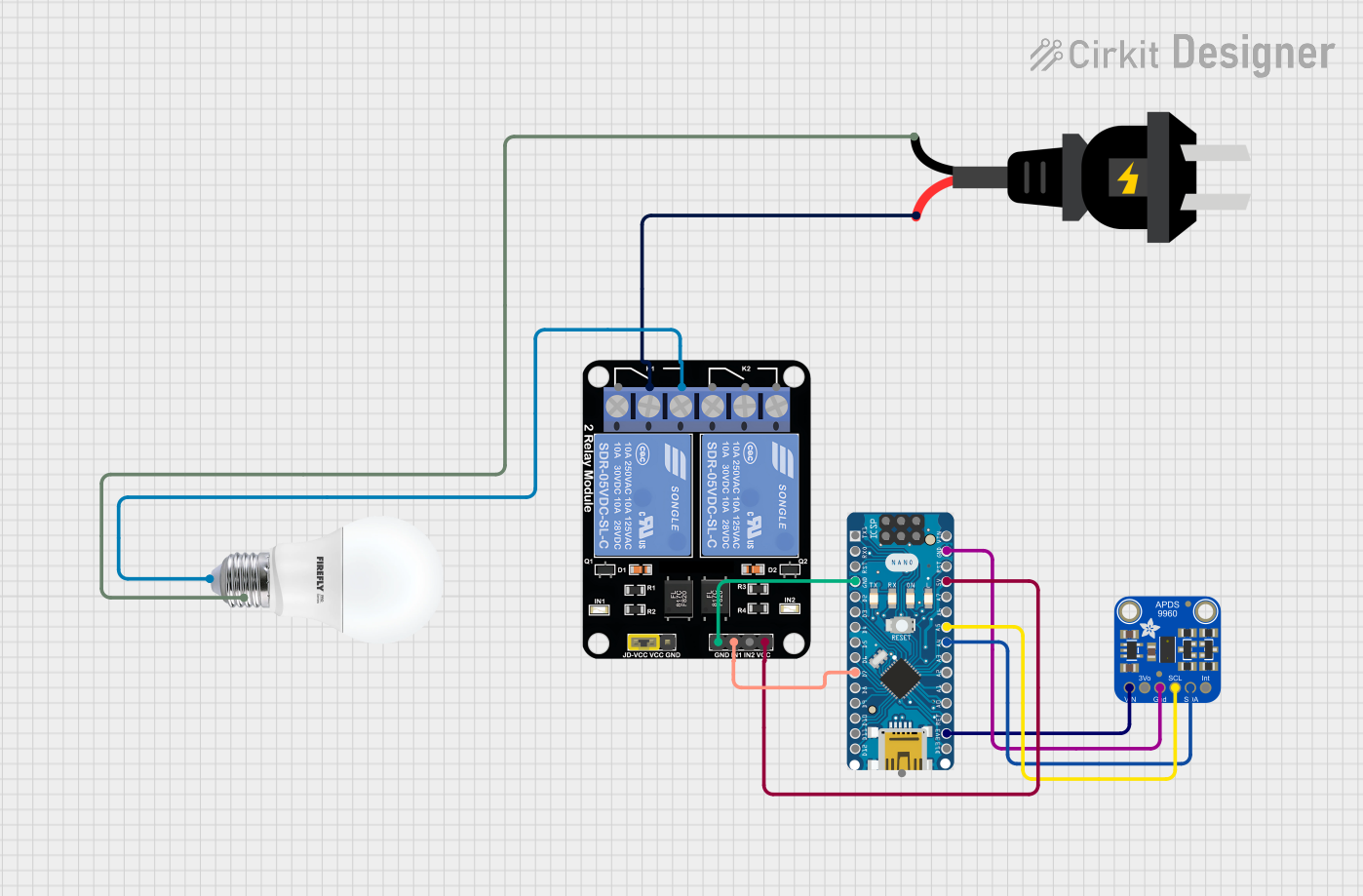
How to Use APDS-9960 V2: Examples, Pinouts, and Specs

 Design with APDS-9960 V2 in Cirkit Designer
Design with APDS-9960 V2 in Cirkit DesignerIntroduction
The APDS-9960 V2 is a highly versatile sensor that integrates multiple functionalities, including ambient light sensing, proximity detection, RGB color sensing, and gesture recognition, into a single compact package. This sensor communicates via the I2C protocol, making it easy to interface with microcontrollers and development boards such as the Arduino UNO.
Common applications of the APDS-9960 V2 include:
- Smartphones and tablets for gesture-based user interaction
- Smart home devices for ambient light adjustment and proximity detection
- Robotics for gesture-controlled interfaces
- Wearable devices for environmental awareness and user interaction
Explore Projects Built with APDS-9960 V2

 Open Project in Cirkit Designer
Open Project in Cirkit Designer
 Open Project in Cirkit Designer
Open Project in Cirkit Designer
 Open Project in Cirkit Designer
Open Project in Cirkit Designer
 Open Project in Cirkit Designer
Open Project in Cirkit DesignerExplore Projects Built with APDS-9960 V2

 Open Project in Cirkit Designer
Open Project in Cirkit Designer
 Open Project in Cirkit Designer
Open Project in Cirkit Designer
 Open Project in Cirkit Designer
Open Project in Cirkit Designer
 Open Project in Cirkit Designer
Open Project in Cirkit DesignerTechnical Specifications
The APDS-9960 V2 is designed to provide reliable and accurate sensing capabilities. Below are its key technical specifications:
| Parameter | Value |
|---|---|
| Operating Voltage | 2.4V to 3.6V |
| I/O Voltage | 1.8V to 3.6V |
| Communication Interface | I2C (7-bit address: 0x39) |
| Proximity Detection Range | Up to 100 mm |
| Gesture Sensing Range | 10 mm to 150 mm |
| Ambient Light Sensitivity | 0.01 lux to 10,000 lux |
| RGB Color Sensing Range | 0 to 65,535 counts per channel |
| Operating Temperature | -40°C to +85°C |
| Power Consumption (Active) | 1.0 mA (typical) |
| Power Consumption (Sleep) | 2.2 µA (typical) |
Pin Configuration and Descriptions
The APDS-9960 V2 has a total of 6 pins. Below is the pinout and description:
| Pin | Name | Description |
|---|---|---|
| 1 | VDD | Power supply input (2.4V to 3.6V) |
| 2 | GND | Ground connection |
| 3 | SDA | I2C data line |
| 4 | SCL | I2C clock line |
| 5 | INT | Interrupt output (active low) |
| 6 | LDR | LED driver pin for external IR LED (optional use) |
Usage Instructions
The APDS-9960 V2 is straightforward to use in a circuit, especially with microcontrollers like the Arduino UNO. Below are the steps to get started:
Connecting the APDS-9960 V2 to an Arduino UNO
- Power the Sensor: Connect the VDD pin to the 3.3V pin on the Arduino UNO and the GND pin to the Arduino's GND.
- I2C Communication: Connect the SDA pin to the Arduino's A4 pin and the SCL pin to the A5 pin (for older Arduino boards) or the dedicated SDA and SCL pins on newer boards.
- Interrupt Pin: Optionally, connect the INT pin to a digital input pin on the Arduino for interrupt-based gesture detection.
- Optional LED Driver: If using an external IR LED, connect it to the LDR pin.
Example Arduino Code
Below is an example Arduino sketch to read proximity data from the APDS-9960 V2:
#include <Wire.h>
#include <Adafruit_APDS9960.h>
// Create an instance of the APDS-9960 sensor
Adafruit_APDS9960 apds;
// Setup function
void setup() {
Serial.begin(9600); // Initialize serial communication
while (!Serial); // Wait for the serial monitor to open
// Initialize the APDS-9960 sensor
if (!apds.begin()) {
Serial.println("Failed to initialize APDS-9960 sensor!");
while (1); // Halt execution if initialization fails
}
Serial.println("APDS-9960 initialized successfully!");
// Enable proximity sensing
apds.enableProximity(true);
}
// Loop function
void loop() {
uint8_t proximity = apds.readProximity(); // Read proximity value
// Print proximity value to the serial monitor
Serial.print("Proximity: ");
Serial.println(proximity);
delay(500); // Wait for 500ms before the next reading
}
Important Considerations and Best Practices
- Power Supply: Ensure the sensor is powered with a stable voltage between 2.4V and 3.6V. Using 5V may damage the sensor.
- I2C Pull-Up Resistors: If your microcontroller does not have built-in pull-up resistors on the I2C lines, add external 4.7kΩ resistors between SDA/SCL and VDD.
- Interrupt Pin: Use the INT pin for efficient gesture detection to avoid continuously polling the sensor.
- Ambient Light Interference: Avoid placing the sensor in direct sunlight or near strong light sources, as this may affect its performance.
Troubleshooting and FAQs
Common Issues and Solutions
Sensor Not Detected on I2C Bus
- Ensure the SDA and SCL lines are correctly connected to the microcontroller.
- Verify that the I2C address (0x39) matches the one used in your code.
- Check for proper pull-up resistors on the I2C lines.
Proximity Readings Are Inaccurate
- Ensure there are no obstructions or reflective surfaces too close to the sensor.
- Verify that the sensor is not placed in direct sunlight or near strong IR sources.
Gesture Recognition Not Working
- Ensure the sensor is within the recommended gesture sensing range (10 mm to 150 mm).
- Verify that the INT pin is connected and properly configured in your code.
Ambient Light or Color Readings Are Incorrect
- Calibrate the sensor in the intended environment to account for ambient light conditions.
- Avoid placing the sensor near flickering light sources, such as fluorescent lamps.
FAQs
Q: Can the APDS-9960 V2 be used with 5V microcontrollers?
A: Yes, but you must use a logic level shifter to step down the I2C signals to 3.3V, as the APDS-9960 V2 operates at 3.3V logic levels.
Q: How do I enable gesture recognition?
A: Use the appropriate library (e.g., Adafruit_APDS9960) and call the enableGesture() function. Ensure the INT pin is connected for interrupt-based gesture detection.
Q: What is the maximum I2C clock speed supported?
A: The APDS-9960 V2 supports I2C clock speeds up to 400 kHz (Fast Mode).
Q: Can I use the sensor without an external IR LED?
A: Yes, the APDS-9960 V2 has a built-in IR LED, but using an external IR LED may improve performance in low-light conditions.
By following this documentation, you can effectively integrate the APDS-9960 V2 into your projects and take advantage of its powerful sensing capabilities.